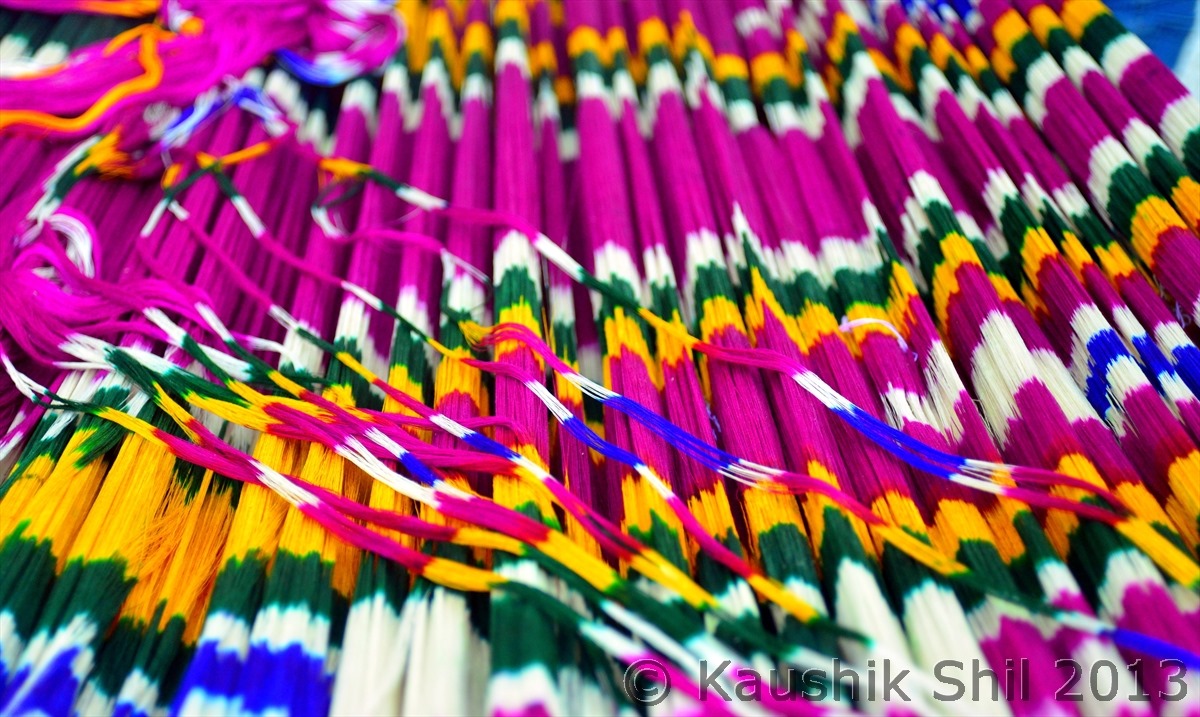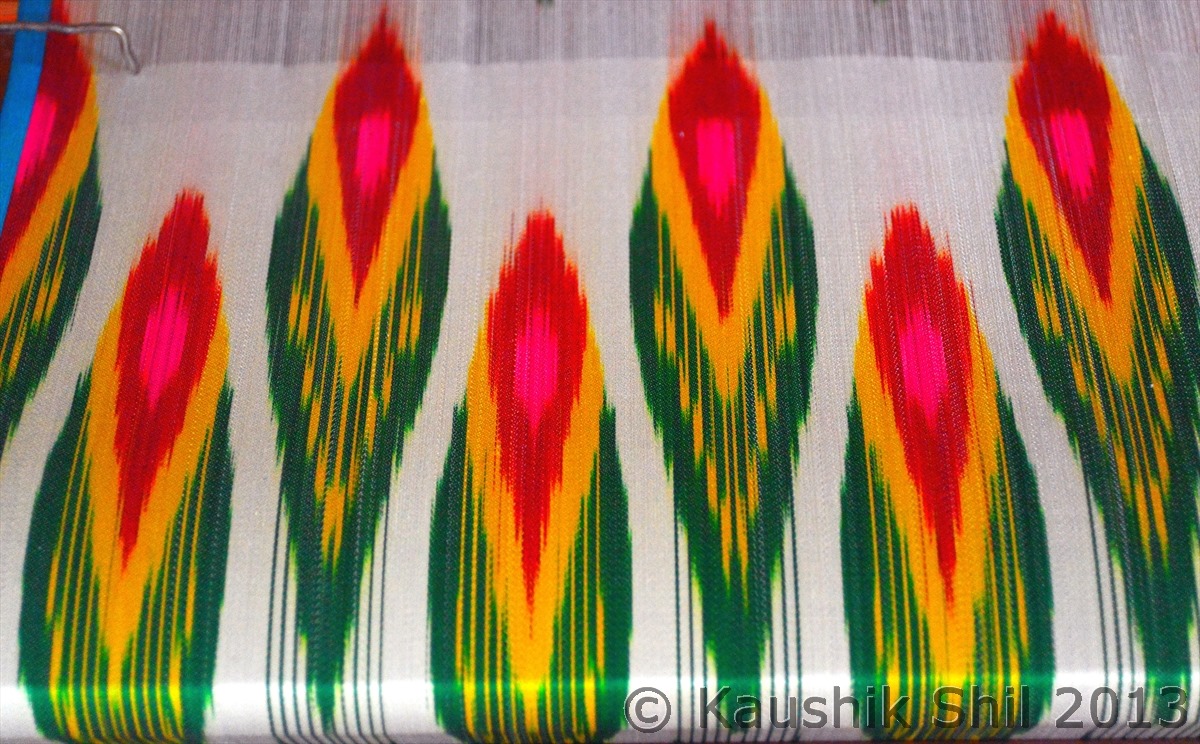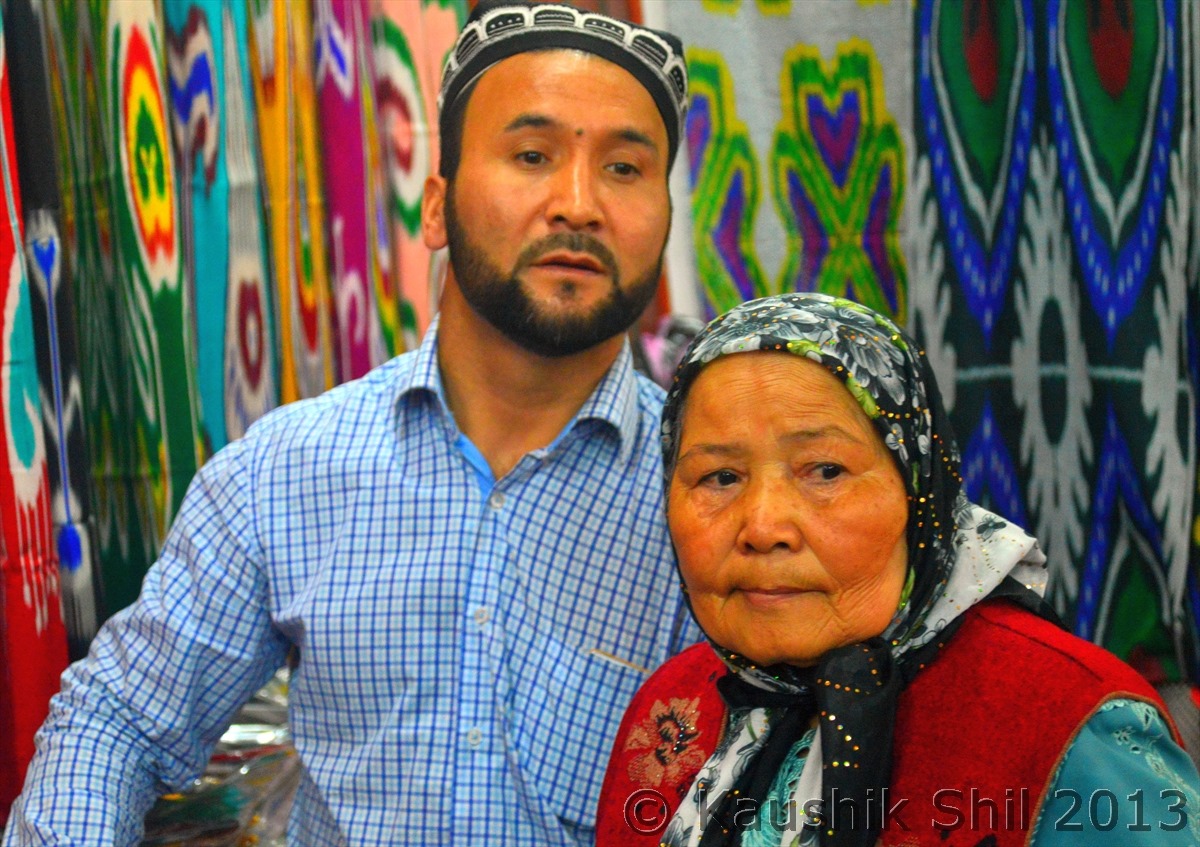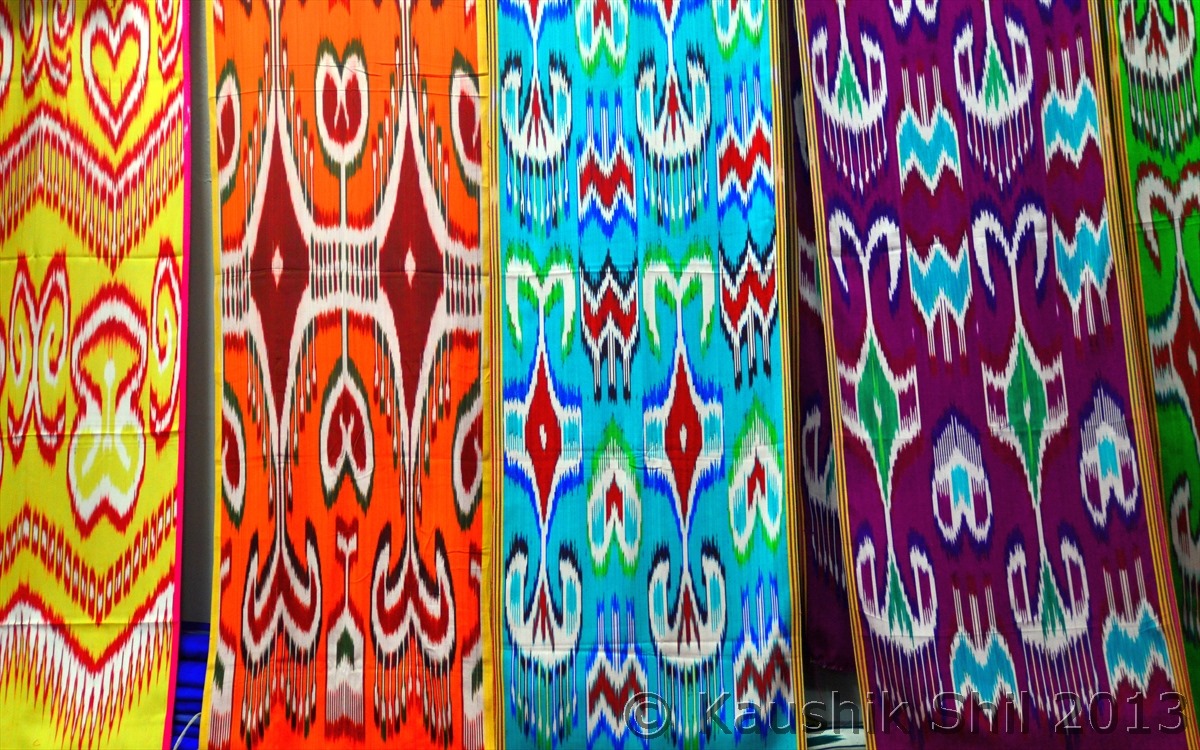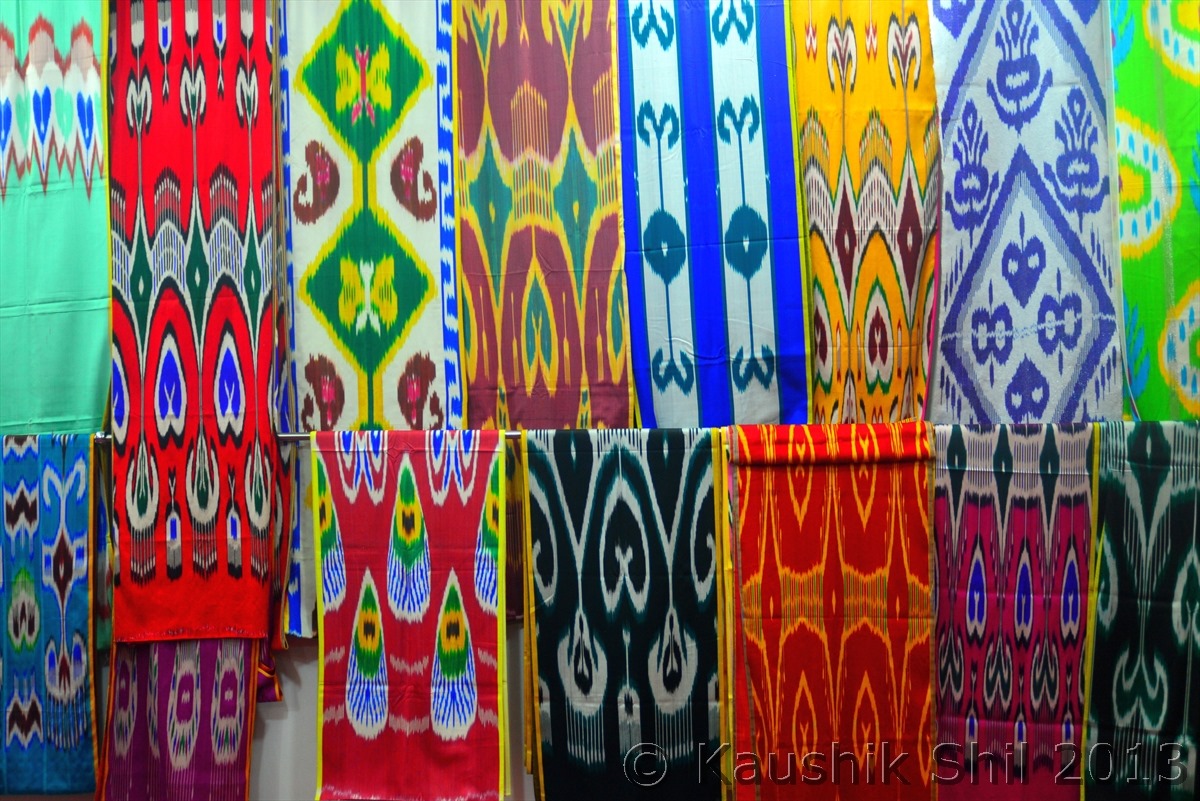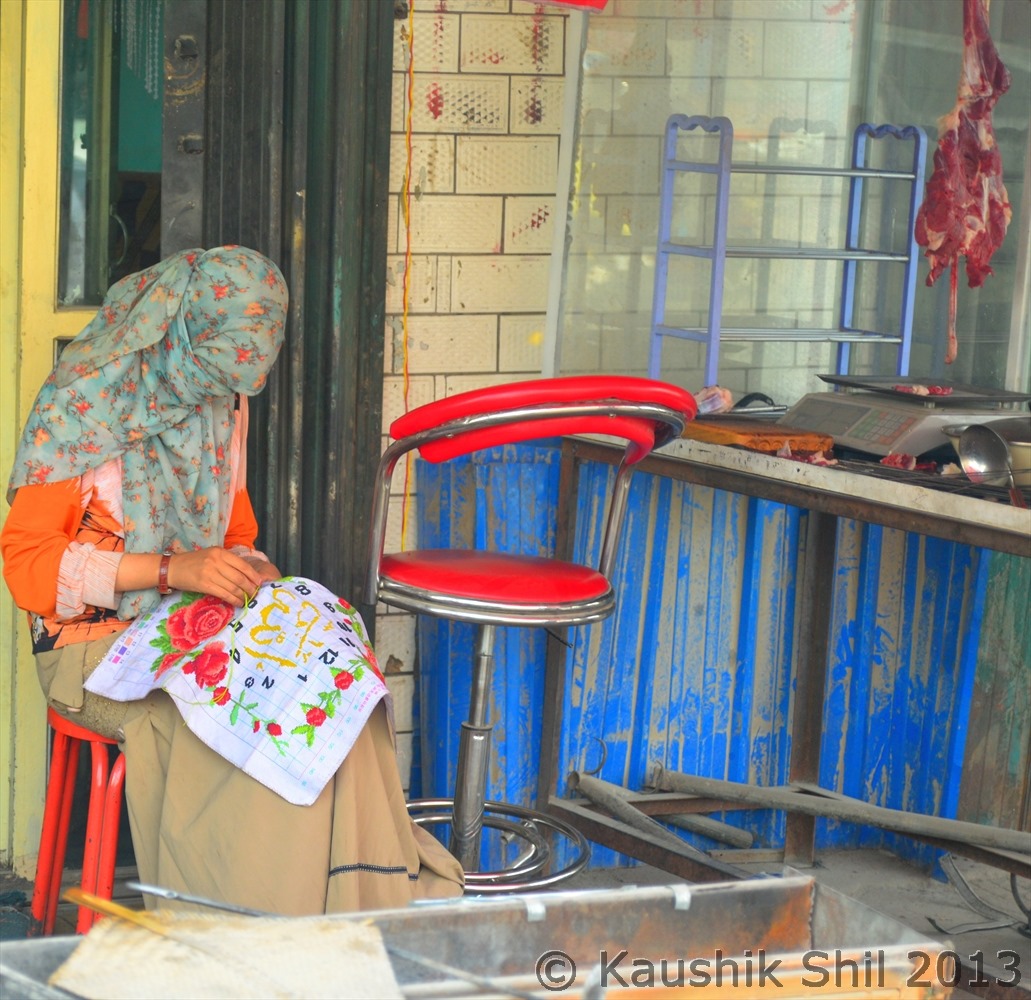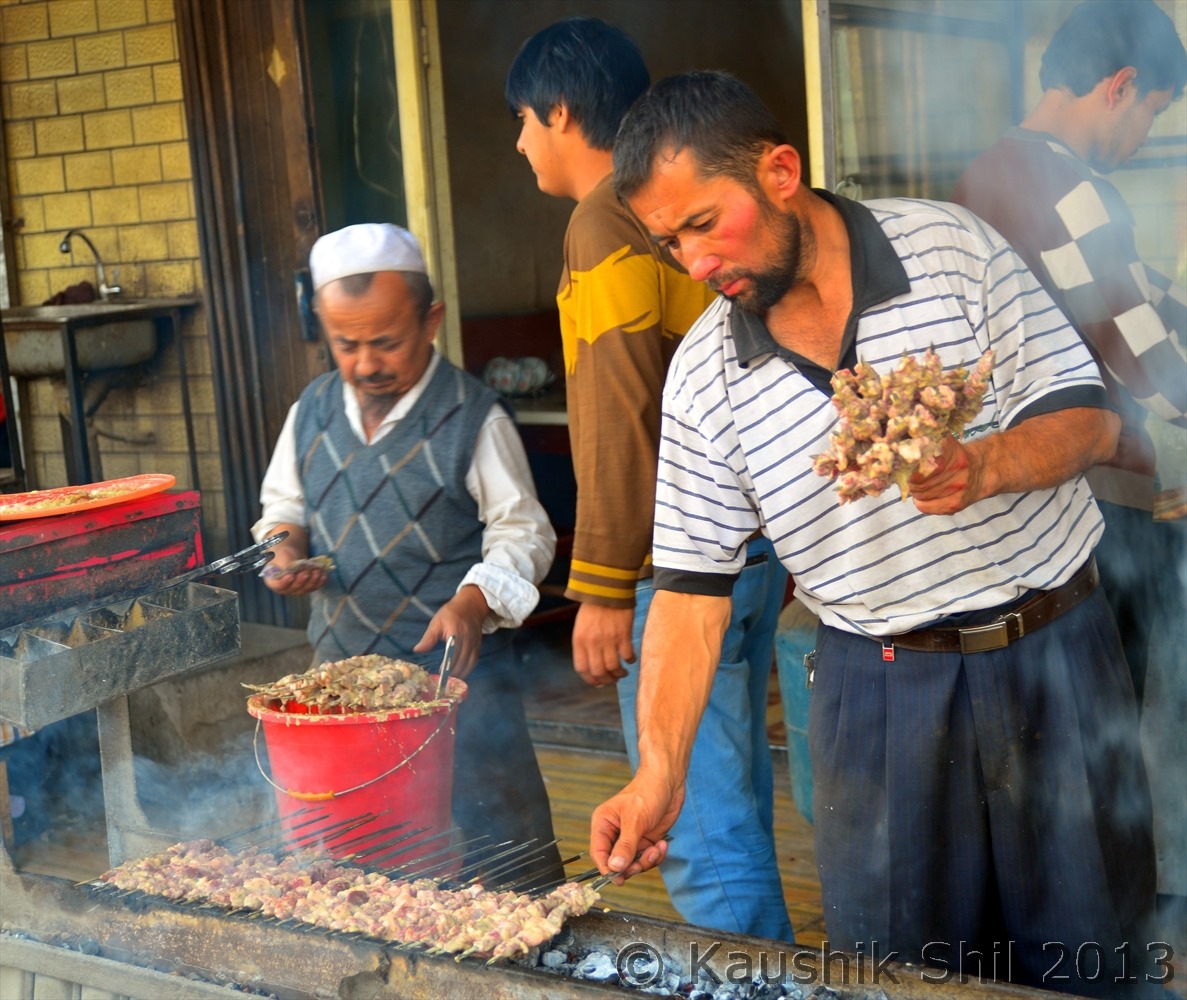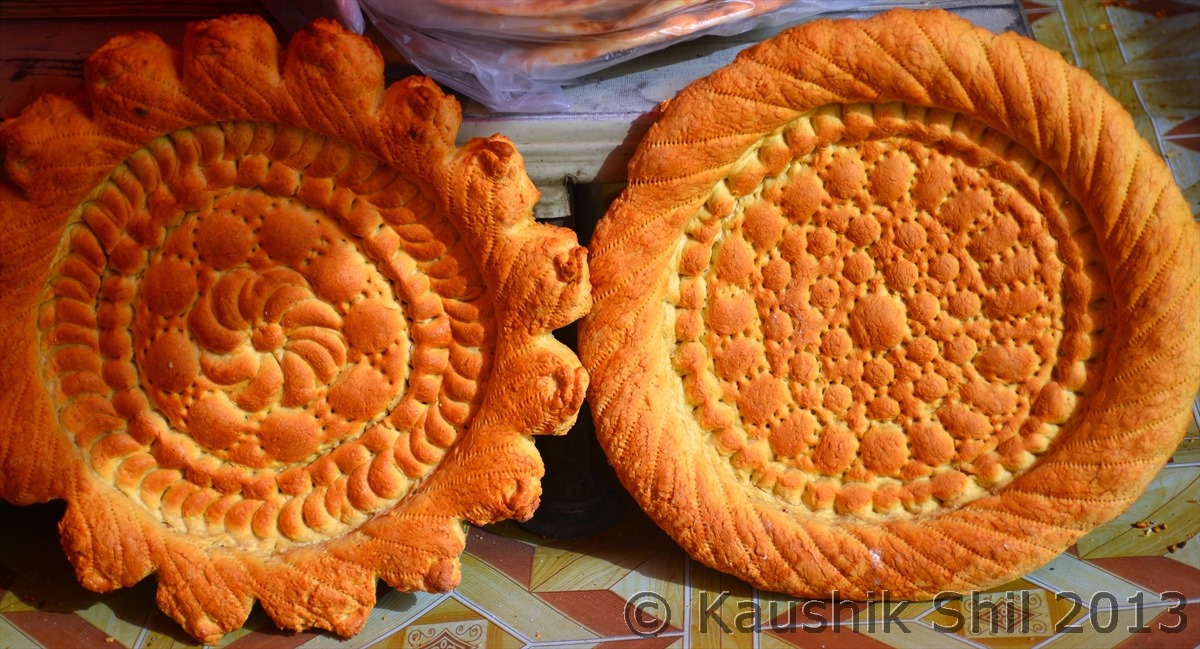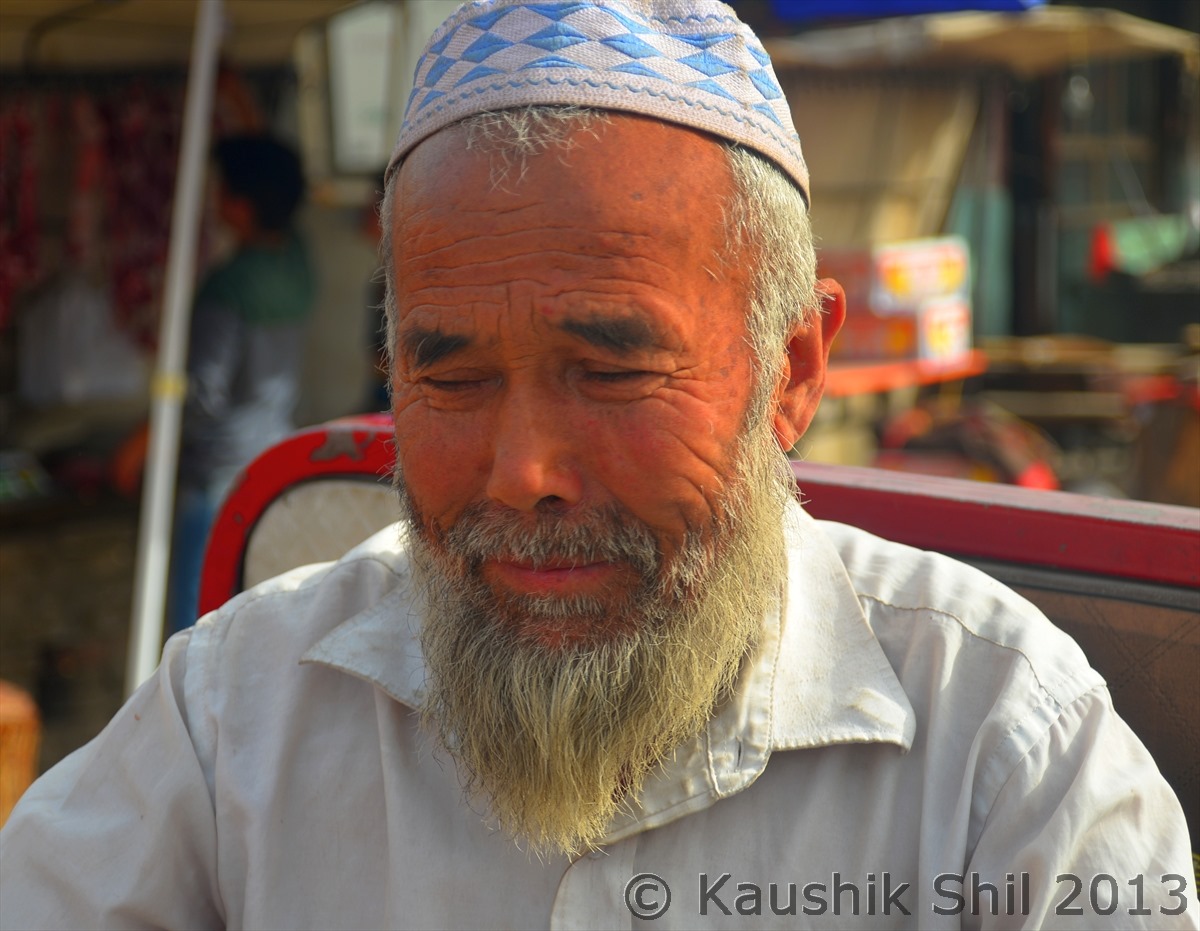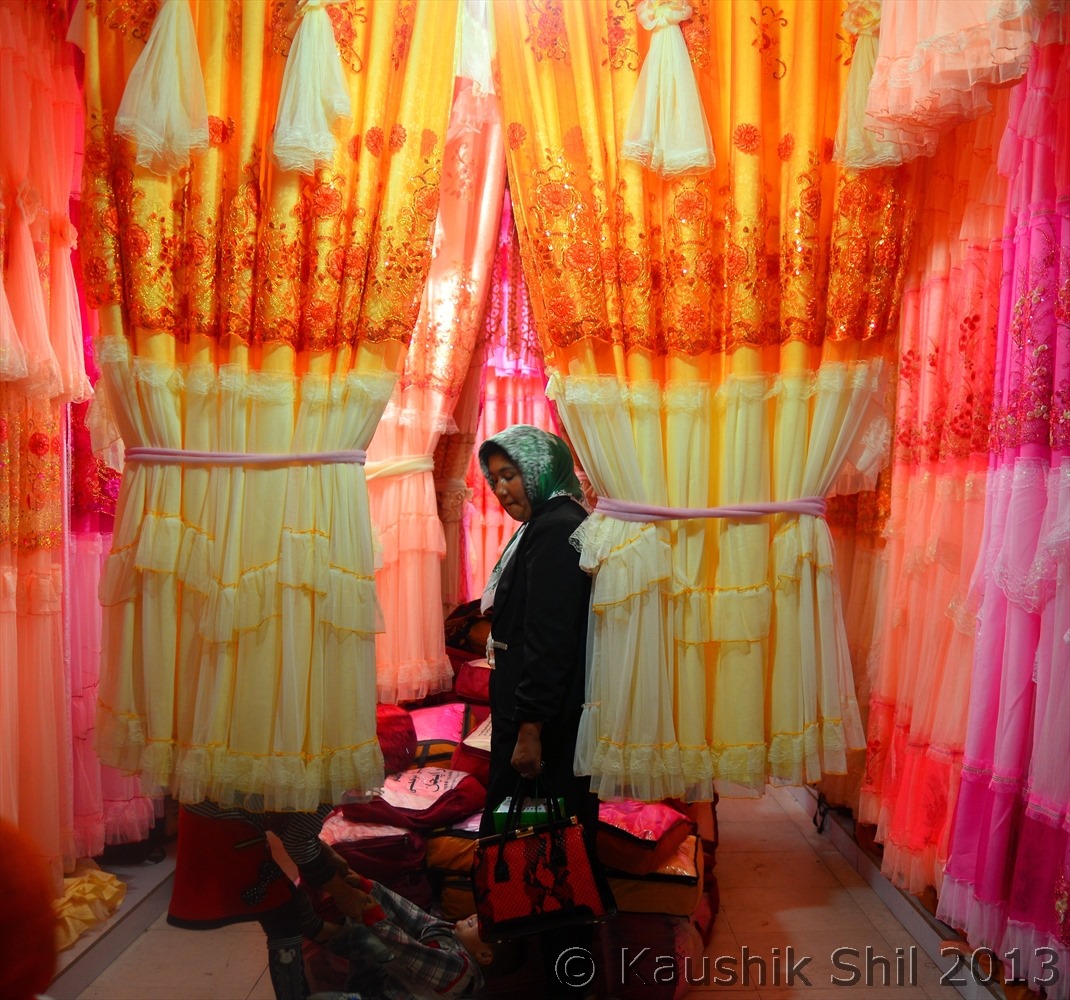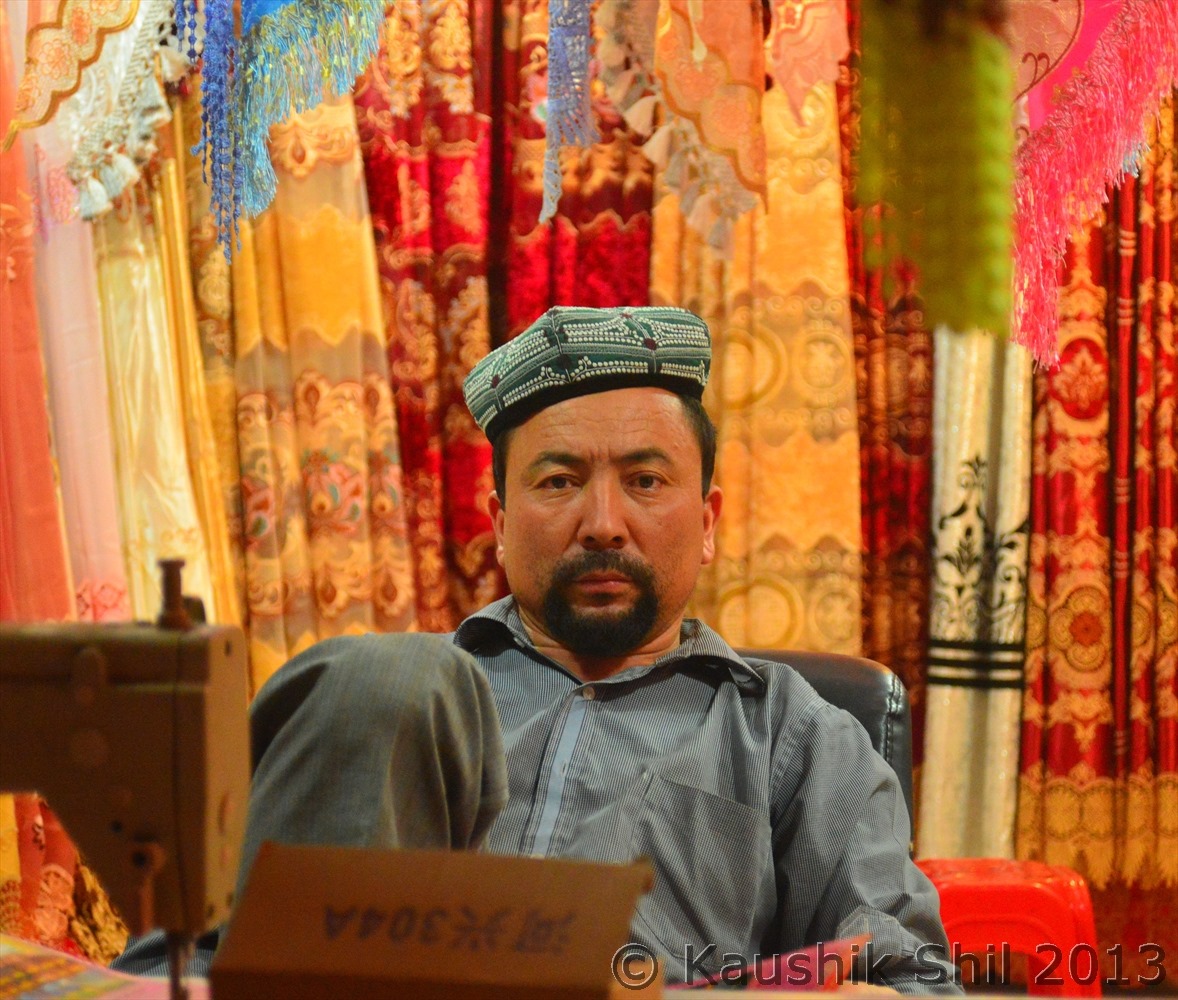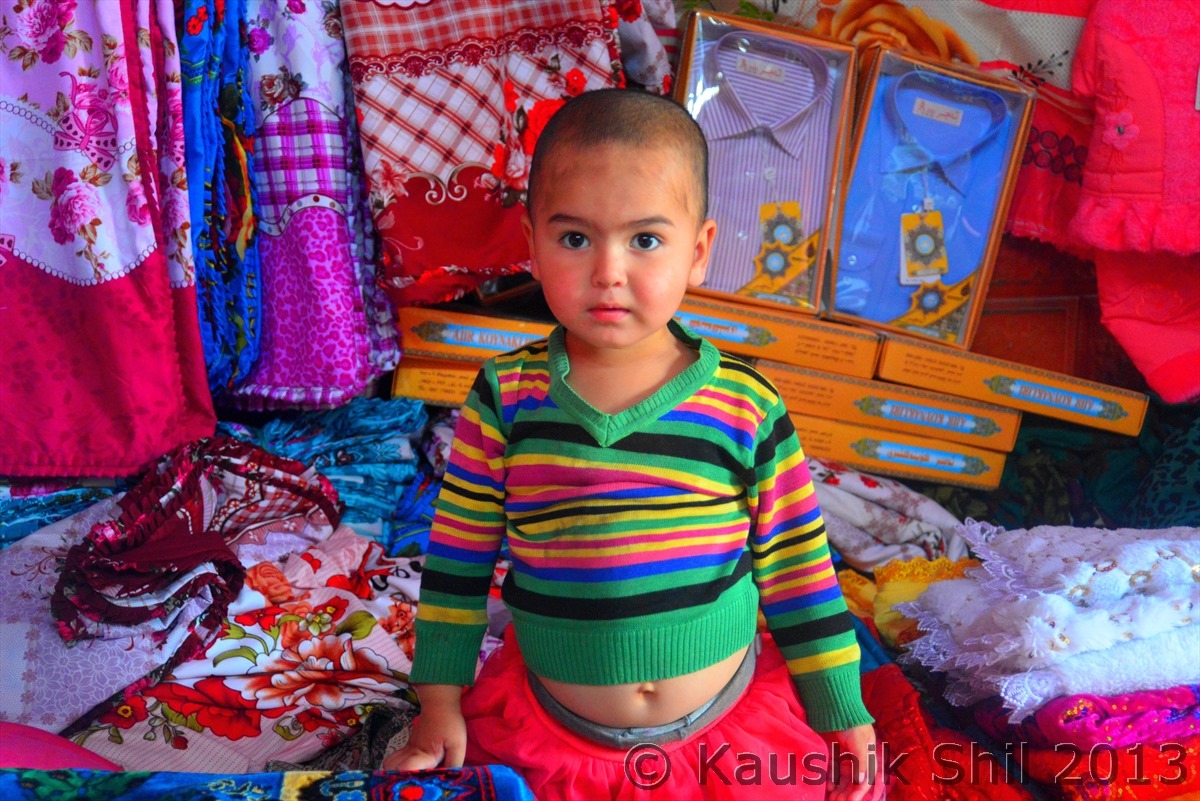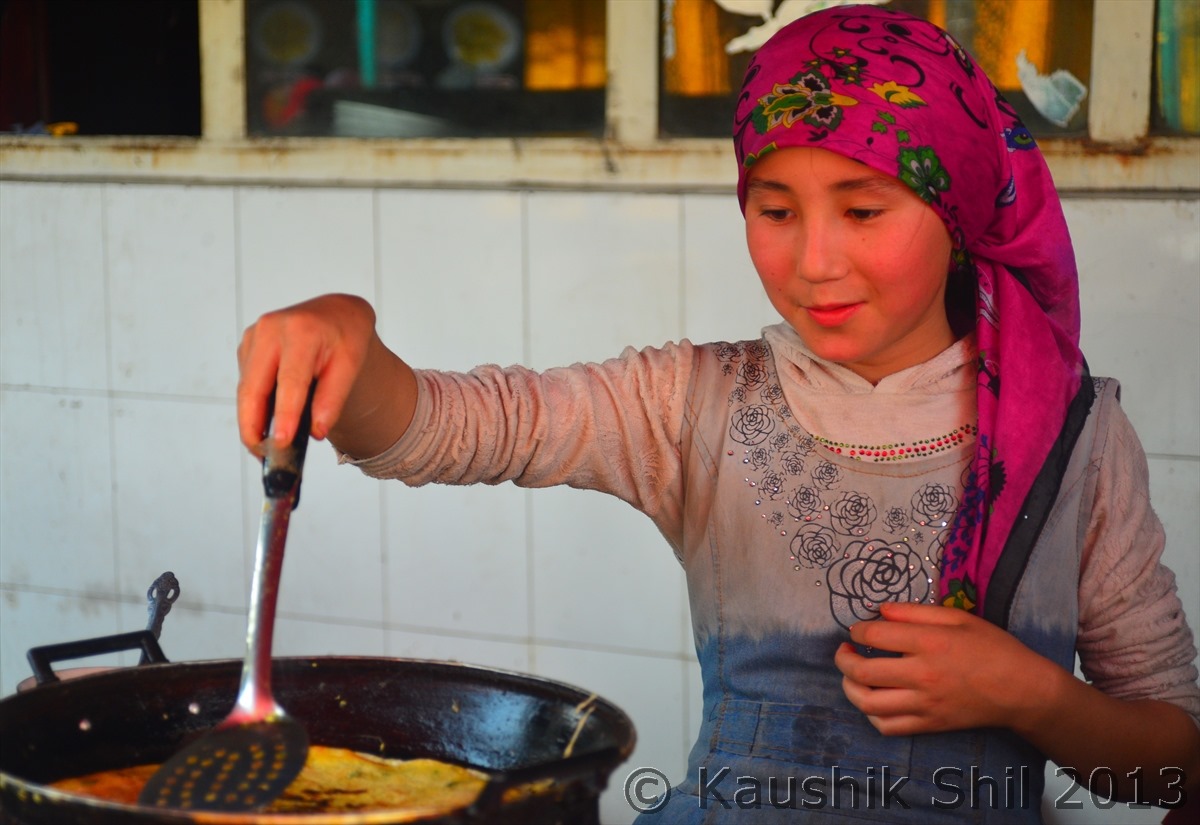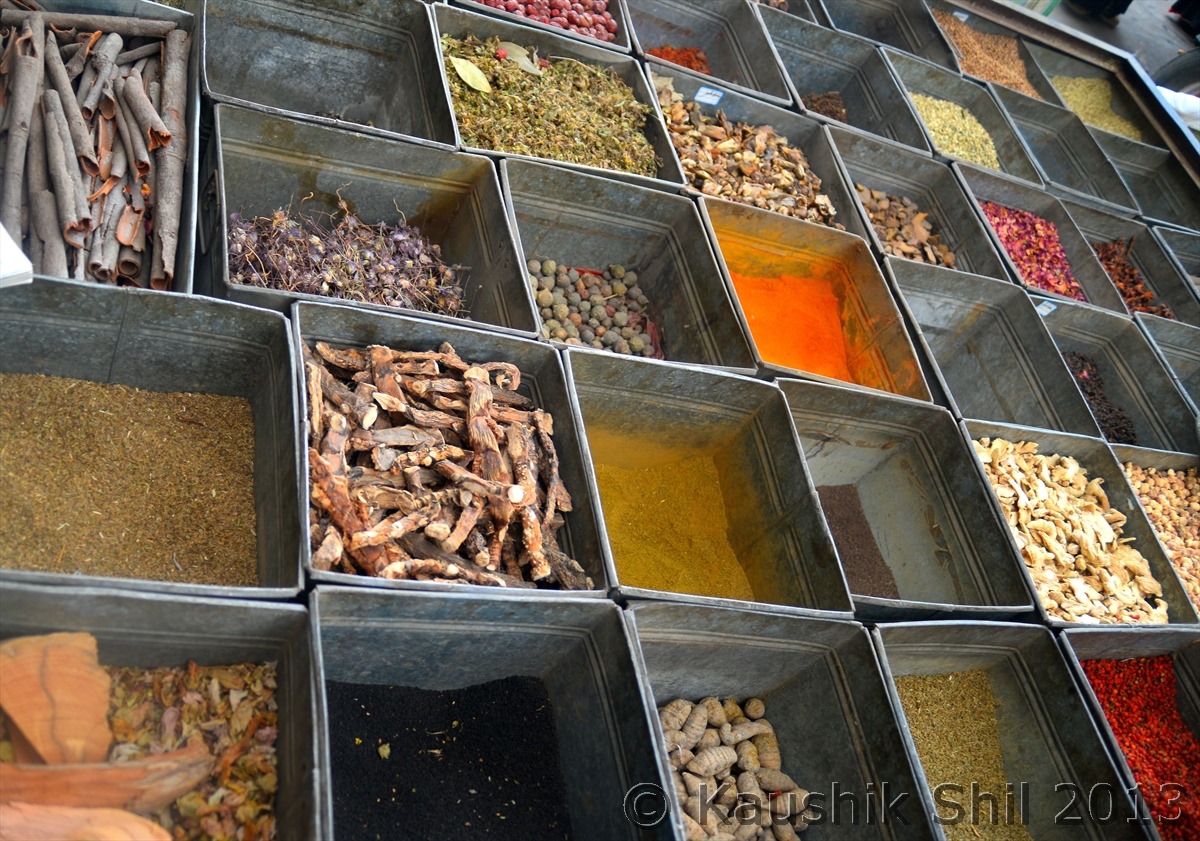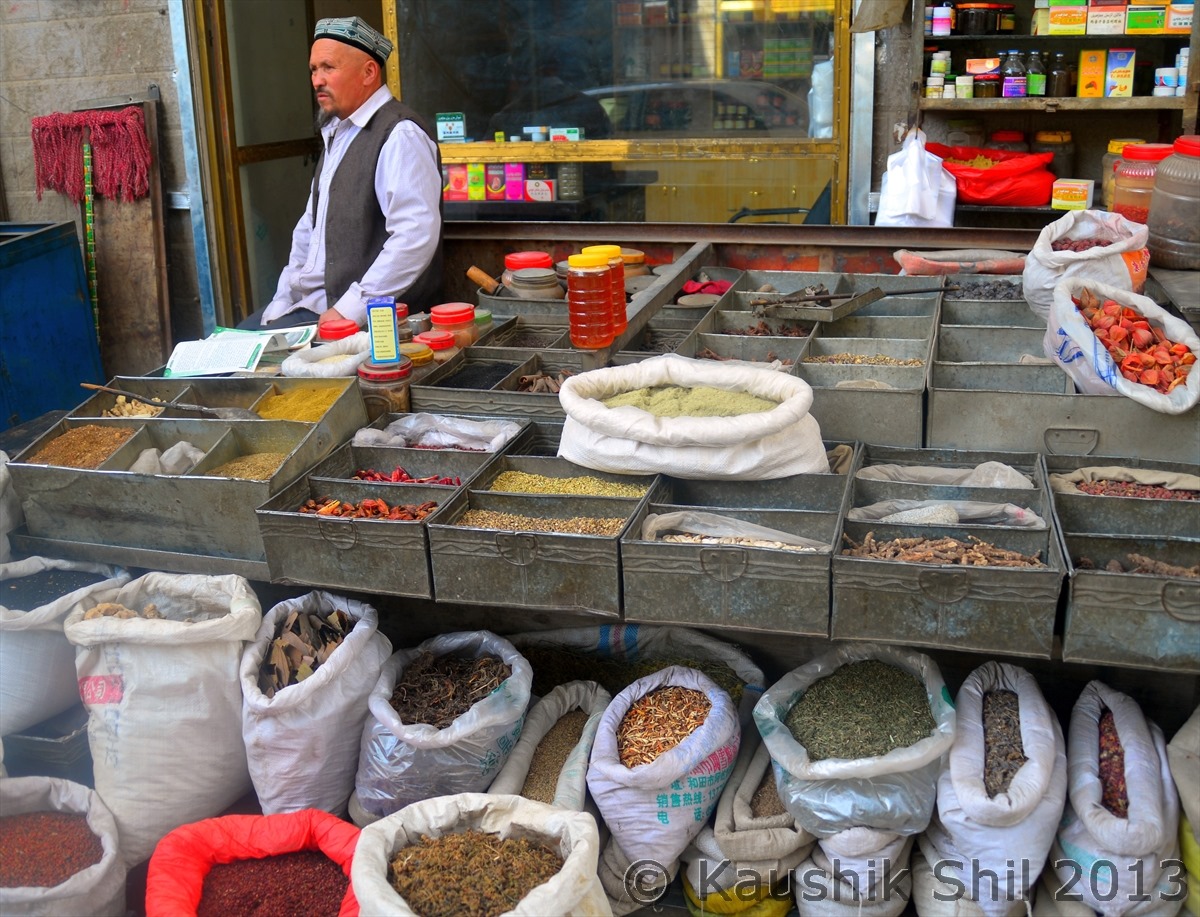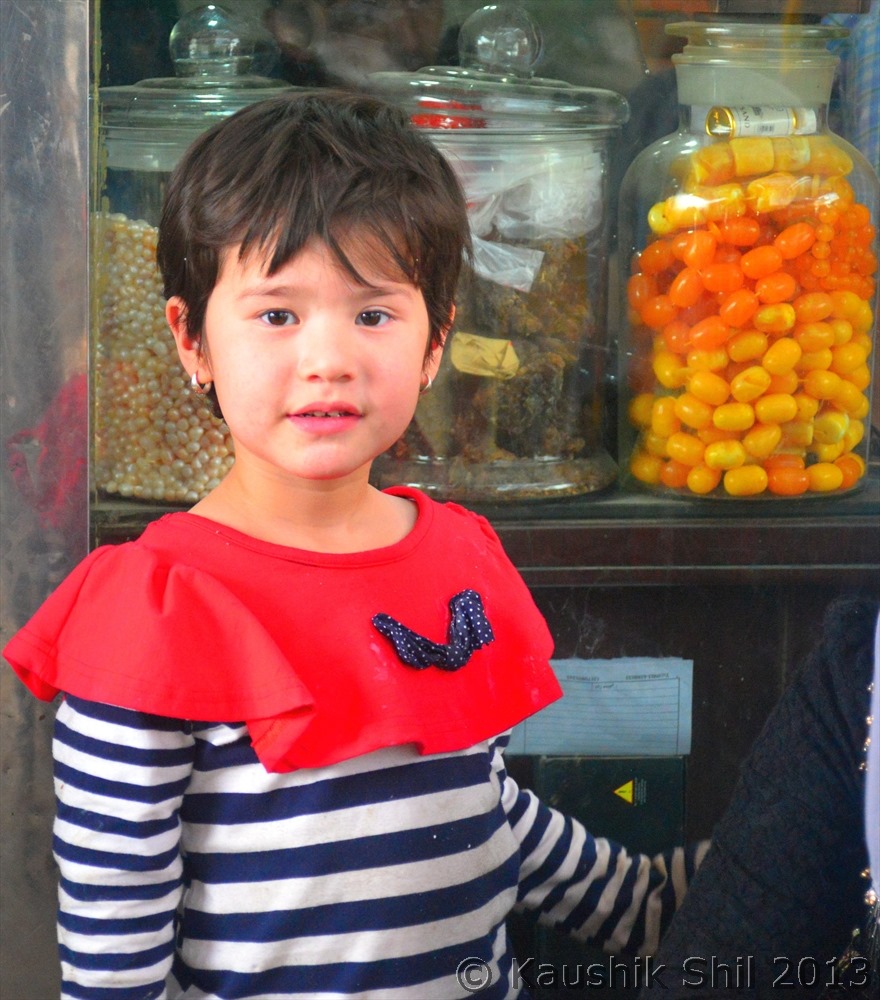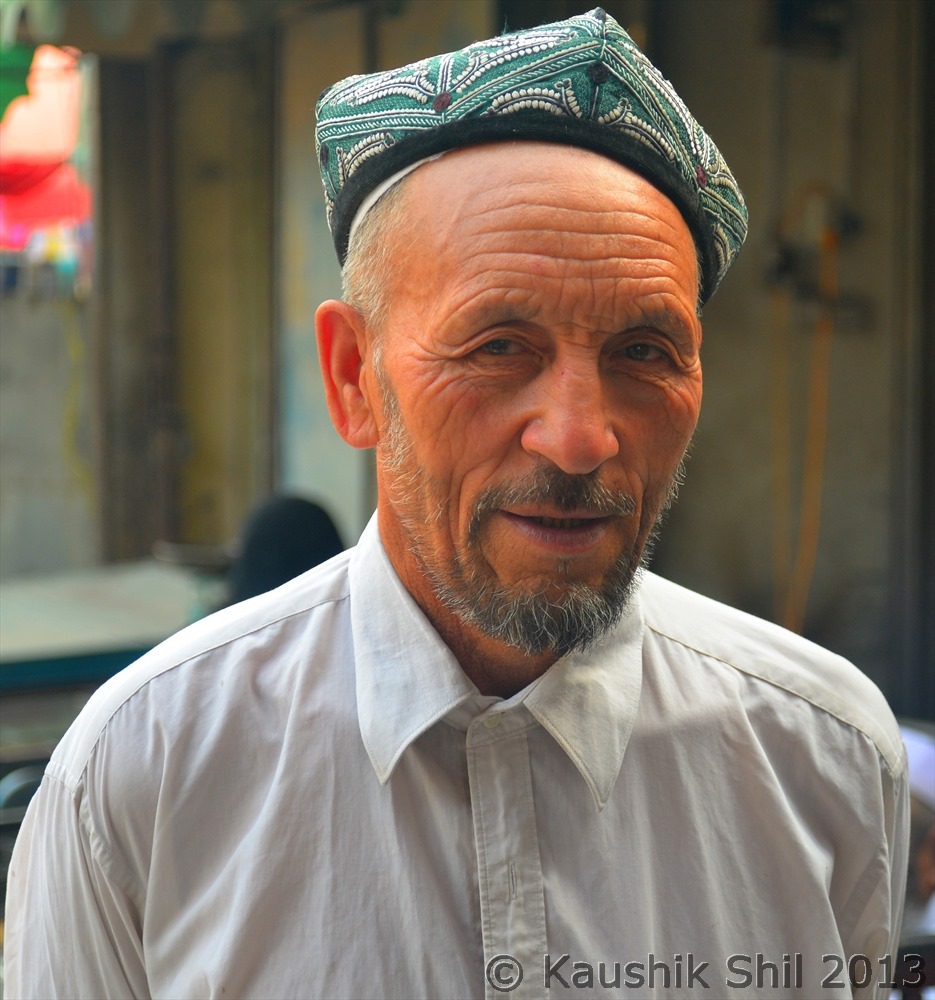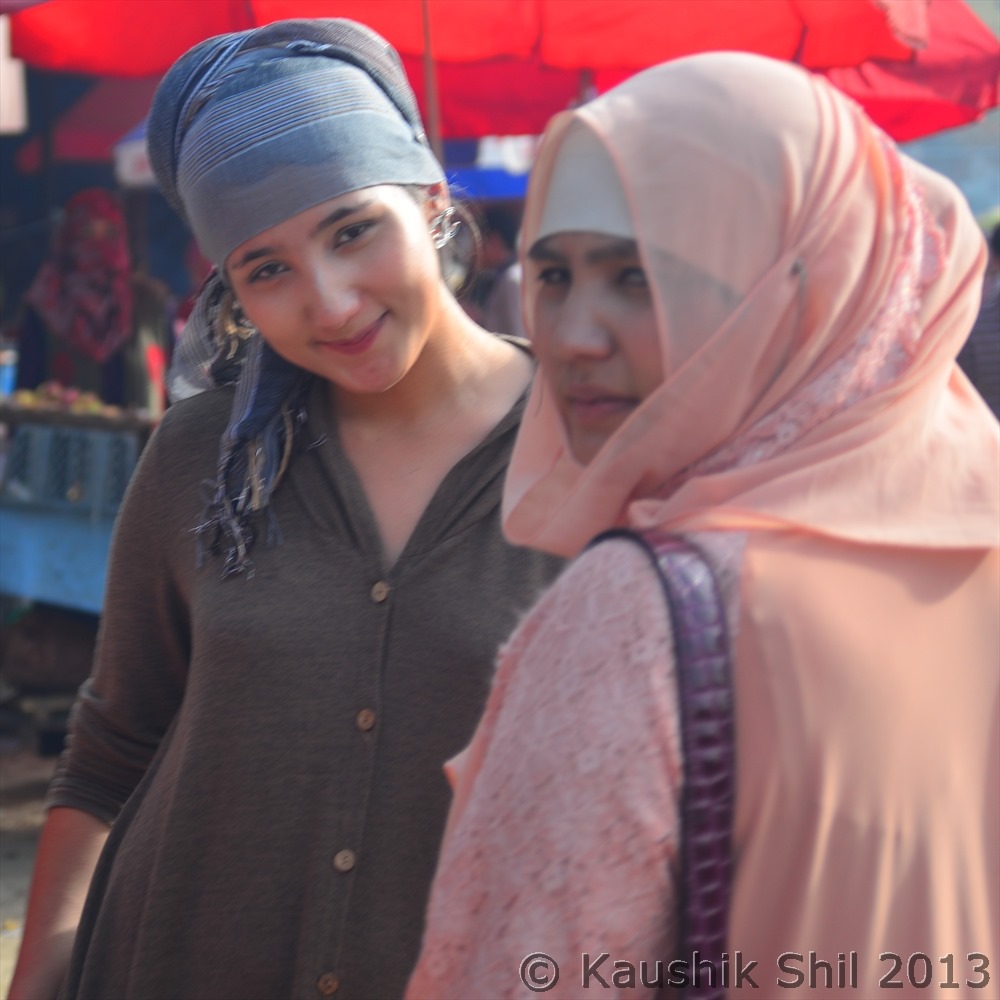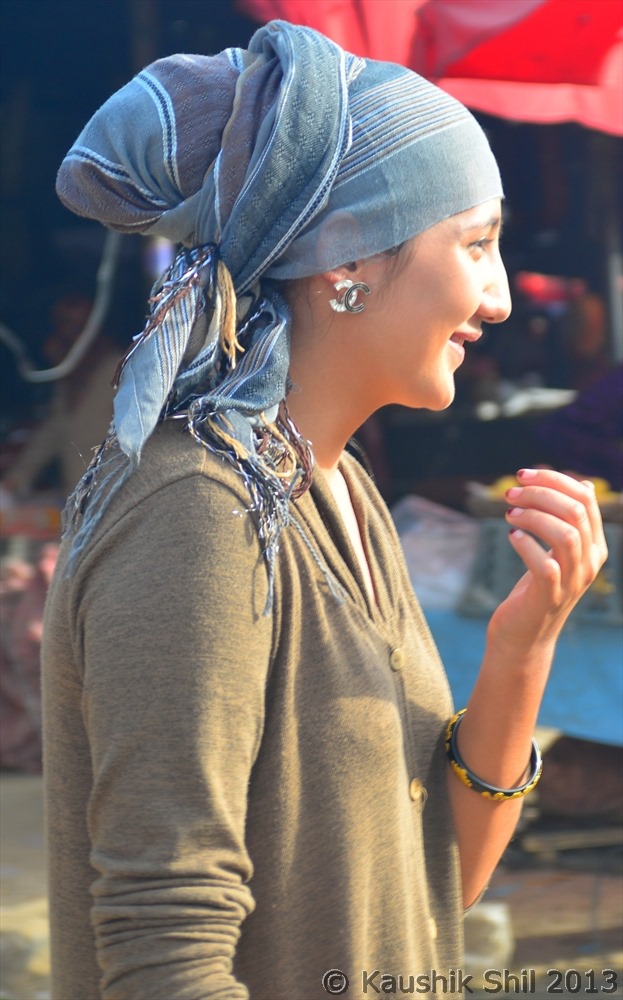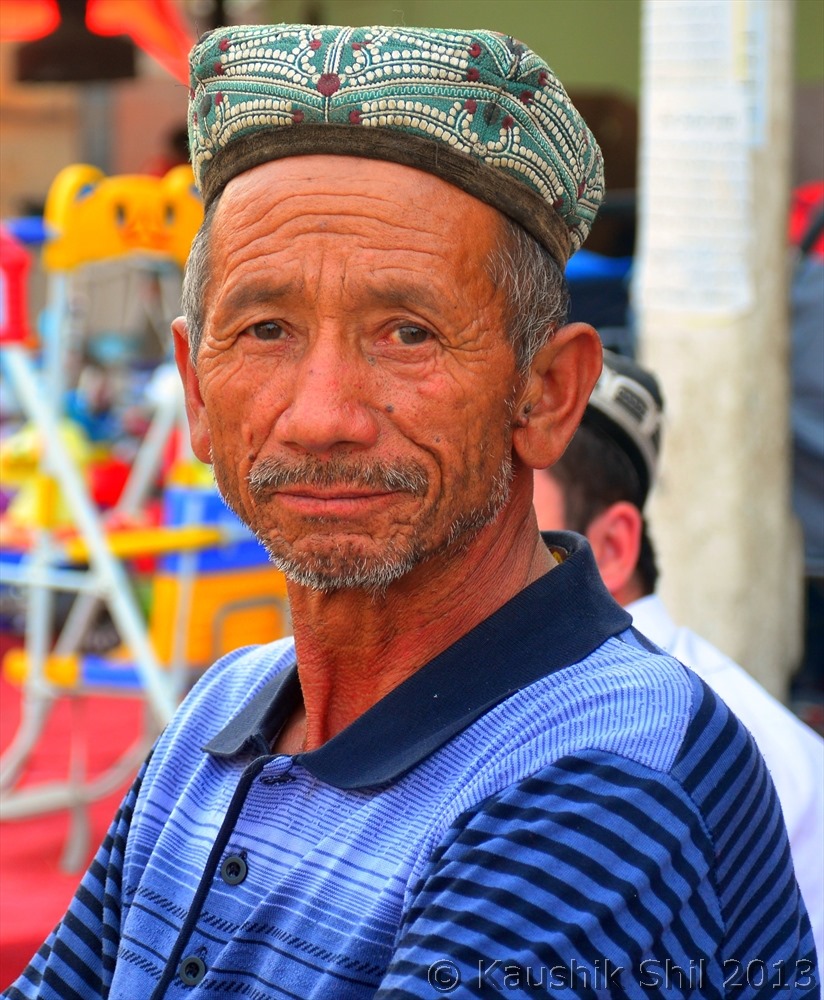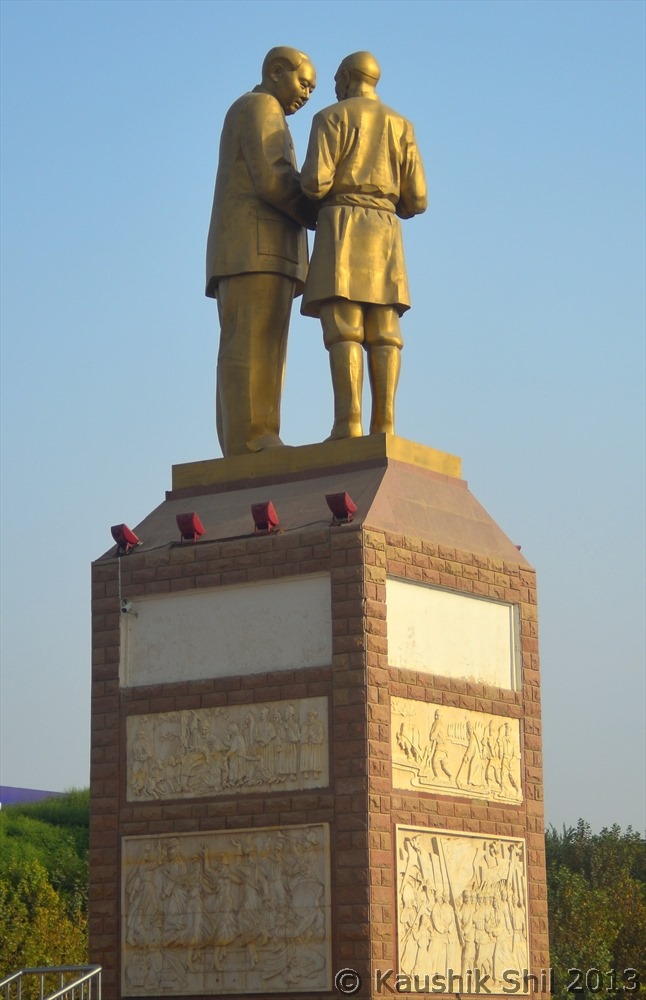Day 11 Continued…
We drove across the southern rim of Taklamakan and with few and far some oasis appeared, rest all are barren desert as we drove towards West. Hotan is barely 150km from Niya and can be reached easily in 2 hours. So our main objective of the day was to explore this old town of Hotan, it’s famous carpet and silk factories before looking around the historical Hotan Market. The oasis town of Hotan (historically known as Khotan as we read in history book and Hetian in Chinese) is famous for its jade, carpets, silk and embroidery. Indeed the fame rises with the blossoming of silk route. The traditional hand-woven silk produced in small family units and rich natural colors of and designs of Hotan Carpets have still been treasured all over the world.
History of Hotan is no less surprising. This area was originally inhabited as early as late Paleolithic age (up to 10000 BCE) and was occupied around 1000 BCE by the Saka, a semi nomadic, Indo-European group originating from eastern Persian Realm. Around 300 BCE immigrants from India moved into this region and formed this first Indian town in Tarim Basin and according to legend the first King of Hotan said of a son of King Ashoka, the Mauryan emperor, settled there around 225 BCE. During 2nd Century CE, this region was ruled by Indo-Scythian kingdom of Kushans, whose ruler Kanishka though was a Buddhist, supported other religions of Hindu and Iranian faith. This influence of Kushans and Mauryas brought the Gandhar art in these areas including Kuqa. Buddhism flourished here in fourth and fifth century and remained as a centre of Mahayana Buddhism until the early of 11th Century when it was conquered by Muslims of Kashgar. Hotan’s prosperity can be easily guessed by famous pilgrim Fa Xian’s account who stayed in Hotan for 3 months and left a vivid account of thousands of monks and many monasteries ornamentally carved and overlaid by gold and silver. This place was even under serious Indian influence till Communist regime in China took over in 1948. In 1935, when Peter Fleming (A British Adventurer and Travel writer, elder brother of Ian Fleming, creator of James Bond) and Ella Maillart (A Swiss Olympian and Travel Writer) took their epic journey of 7 months from Beijing to Srinagar (They were lucky, I am sure they couldn’t take such trip in modern day through Xinjiang, Tibet, Ladakh, Skardu, Gilgit to Srinagar) arrived at Hotan, they found the city was hand-printing its own currency note from Mulberry trees (those who are not aware, Mulberry Tree leaves are main feed for silkworms). Their vivid account of witnessing the arrival by mule of British Indian Postman with documents for local Indian merchants and the three months old copies of “The Times” brought all the way from Kashmir made the point how close these places were to India just even 80 years back.
Silk Threads, the product which named this epic route as Silk Route:
The Silk Clothes but you need a knowledgeable tailor to made something tangible out of it:
Silk Trader with his potential Customers:
Silk Pieces, note the hand made designs:
Creativity in a Meat Shop:
Uighur Kebab in making:
The Designer Nans:
Candid expression:
Hotan Market, looks more authentic and still bear the old touch than the Kashgar Market:
Hotan Market Tailor, certainly has an attitude:
Managing Parents shop in their absence:
Helping her Mother, preparing street foods for shoppers:
Spice at Hotan Market:
Another Cute Kid:
Uyghur Cap:
She really looks pretty:
She was ready to pose, although her mother stopped her 
Uighur Man:
Chairman Mao meets a local farmer, something China wants to portray in whole Xinjiang to show how serious and sensitive they are about Uyghur and not only that, they were very serious about their issues from long back — This was an Uyghur man’s explanation, I didn’t thought about it
Previous: Day 11/Part 1
Next: Day 12
